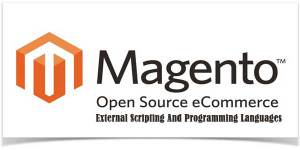
In today’s rapidly changing job market, traditional hiring practices are no longer the only solution for businesses looking to access the best talent. As companies adapt to a more globalized, digital, and flexible work environment, many are turning to staff augmentation as a strategic method for scaling their teams and boosting productivity.
Staff augmentation is revolutionizing how organizations acquire talent, offering a flexible, cost-effective, and scalable solution that provides companies with the right skills at the right time. But what exactly is staff augmentation? And why is it quickly becoming the future of hiring? In this article, we’ll dive into the concept of staff augmentation, explore its benefits, and discuss why it’s becoming the go-to strategy for companies aiming to stay competitive in today’s fast-paced world.
Table of Contents
What is Staff Augmentation?
Staff augmentation is a workforce solution where businesses hire external professionals to temporarily fill specific roles within their organization. Unlike traditional outsourcing, which involves hiring a third-party company to handle entire projects, staff augmentation focuses on integrating skilled professionals directly into a company’s existing team to augment and enhance its capabilities.
This model allows companies to expand their workforce without the long-term commitment of full-time hires. Typically, staff augmentation is used to address temporary needs, such as covering for an employee on leave, filling skill gaps for a project, or scaling up during peak seasons.
Key Features of Staff Augmentation:
- Temporary or project-based: Professionals are hired temporarily to fulfil short-term needs.
- Seamless integration: Augmented staff work directly with in-house teams, maintaining alignment with the company’s culture and objectives.
- Flexible skillsets: Businesses can hire for specific expertise or skills needed at a particular moment, without the long-term commitment of a full-time hire.
Why Staff Augmentation is the Future of Hiring?
The global business landscape has shifted dramatically over the past few years, with technology and the demand for specialized skills evolving faster than ever. Traditional hiring practices, such as posting job listings, screening candidates, and waiting weeks or months to fill a position, no longer meet the demands of modern businesses. Staff augmentation offers a flexible, agile, and highly effective solution that aligns with the needs of today’s workforce.
Here’s why staff augmentation is the future of hiring:
1.) Speed and Flexibility:
In today’s fast-paced market, the ability to scale your workforce quickly is essential. Companies can’t afford to wait weeks or months to hire a full-time employee. Staff augmentation allows businesses to quickly onboard professionals with the exact skills they need to address immediate challenges. This rapid flexibility is crucial for meeting deadlines, managing seasonal demands, and adapting to changing business conditions.
2.) Access to Specialized Talent:
The talent pool has become increasingly global, and companies are finding it harder to locate professionals with niche skill sets. With staff augmentation, businesses can tap into a vast network of skilled professionals who possess the exact expertise needed for specific tasks or projects. Whether it’s software developers, digital marketers, or data analysts, staff augmentation provides companies with access to a broader talent pool, ensuring that they can always find the right person for the job.
3.) Cost-Effectiveness:
Hiring full-time employees can be expensive, particularly when considering salaries, benefits, training, and recruitment costs. Staff augmentation allows companies to fill gaps in their workforce without the financial burden of long-term employment contracts. Since augmented staff are typically paid on an hourly or project basis, companies only pay for the hours worked, leading to cost savings in comparison to traditional hiring methods.
4.) Scalability and Business Agility:
In an uncertain market, businesses need to be agile. Staff augmentation allows organizations to scale their teams up or down as needed, without the complexity of hiring or firing full-time employees. This flexibility is particularly valuable during peak business periods, product launches, or special projects that require additional resources. The ability to adjust your workforce quickly gives businesses a competitive edge.
5.) Reduced Risk:
Staff augmentation reduces the risk of hiring the wrong person. When hiring full-time employees, there’s always a chance that the person you bring on board may not be a perfect fit for your team or the role. With staff augmentation, companies have the opportunity to evaluate workers temporarily before making any long-term commitments. This approach minimizes the risk of making costly hiring mistakes.
How Staff Augmentation Works: A Step-by-Step Guide?
The process of staff augmentation is simple and streamlined, but it involves several key steps to ensure that businesses get the talent they need at the right time. Here’s how it works:
| Step | Description |
| Step 1: Assess the Need | The business identifies the specific skill gaps or workload demands that need to be addressed. |
| Step 2: Source the Talent | A staffing agency or internal recruitment team sources candidates with the necessary skills for the project or task. |
| Step 3: Select the Candidates | The company evaluates candidates, often through interviews or assessments, to ensure they meet the requirements. |
| Step 4: Onboard and Integrate | Once selected, the augmented staff is onboarded and integrated into the team to begin working on the project. |
| Step 5: Performance Monitoring | Throughout the project, the business monitors the augmented staff’s performance to ensure they’re meeting expectations. |
| Step 6: Project Completion | Once the project or task is complete, the augmented staff is released, and the company evaluates the overall outcome. |

Types of Staff Augmentation:
Staff augmentation can take various forms depending on a business’s needs. These are the most popular types of staff augmentation:
- Short-Term Augmentation: Used for short-term projects or to address temporary needs, such as covering employee absences or increasing manpower for seasonal demand.
- Long-Term Augmentation: Provides support for more extended periods, typically for ongoing projects or to cover long-term gaps in expertise.
- IT Staff Augmentation: A common form of staff augmentation in the tech industry, where businesses hire IT professionals such as developers, engineers, and data analysts temporarily to assist with technology projects.
- Administrative Staff Augmentation: Companies hire administrative professionals to assist with administrative tasks, such as managing calendars, scheduling meetings, or handling customer inquiries.
- Creative Staff Augmentation: Common in marketing and advertising agencies, where businesses need additional creative talent like designers, writers, or social media managers.
Benefits of Staff Augmentation for Businesses:
Staff augmentation offers numerous advantages to businesses, particularly those in fast-paced industries or those undergoing rapid growth. Here are the primary benefits:
- Filling Skill Gaps: Companies can easily fill gaps in their teams by hiring professionals with specialized skills or knowledge.
- Faster Time-to-Market: With the ability to bring on skilled professionals quickly, businesses can reduce the time it takes to bring products and services to market.
- Improved Efficiency: Augmented staff brings expertise and fresh perspectives, often leading to improved processes and better outcomes.
- Global Talent Pool: Businesses are no longer limited by geography when sourcing talent, allowing them to find the best professionals for the job from around the world.
- Enhanced Focus on Core Business Activities: By outsourcing specific tasks to augmented staff, businesses can focus on their core activities, driving innovation and growth.
Challenges of Staff Augmentation and How to Overcome Them:
While staff augmentation offers many benefits, it’s not without its challenges. Here are some common hurdles businesses may face when implementing staff augmentation, along with strategies for overcoming them:
1.) Cultural Fit Issues:
Bringing external professionals into your team can sometimes result in cultural clashes or misalignment with your organization’s values. To overcome this challenge:
- Ensure thorough onboarding processes that educate augmented staff about company culture.
- Foster an open line of communication between internal and augmented teams to promote collaboration.
2.) Managing Remote Teams:
Many augmented staff members work remotely, which can lead to communication challenges. To manage this:
- Use project management tools to ensure clear task delegation and progress tracking.
- Schedule regular virtual meetings to maintain team cohesion and ensure alignment on goals.
3.) Quality Control:
Ensuring the quality of work done by augmented staff can be difficult, especially if they’re not fully integrated into the company’s processes. To mitigate this:
- Set clear expectations from the start and maintain frequent performance reviews.
- Use trial periods to evaluate the performance of augmented staff before committing to longer-term engagements.
Is Staff Augmentation Right for Your Business?
Staff augmentation is not a one-size-fits-all solution. While it offers many benefits, it’s important to assess whether this approach is the right fit for your organization’s goals and challenges. Consider staff augmentation if:
- You have a specific, short-term project that requires specialized skills.
- You need to scale up your team quickly without the long-term commitment of full-time hires.
- You want to improve flexibility in your workforce and reduce the overhead of recruiting, hiring, and training new employees.
Conclusion:
Staff augmentation is rapidly emerging as a vital part of the modern workforce landscape. Its ability to provide businesses with flexibility, speed, and access to specialized talent makes it a powerful tool for navigating the demands of a fast-changing global economy. By embracing staff augmentation, companies can remain agile, reduce costs, and ensure they have the right expertise to achieve their goals.
As the world of work continues to evolve, staff augmentation will likely play an even more significant role in the future of hiring, offering a strategic advantage for businesses that want to stay ahead of the curve.
FAQs:
- What is the difference between staff augmentation and outsourcing?
Staff augmentation integrates external talent directly into your team, while outsourcing involves hiring a third-party company to handle entire projects or functions.
- Can staff augmentation be used for permanent roles?
Staff augmentation is typically for temporary or project-based roles, though it can lead to permanent hires if both the business and the augmented staff member are satisfied with the arrangement.
- How do I find the right staff augmentation provider?
Look for reputable staffing agencies or platforms that specialize in your industry and offer a proven track record of providing skilled professionals. Check reviews and ask for case studies or examples of successful engagements.

 About the Author:Aisha Reign is an expert content writer who works at
About the Author:Aisha Reign is an expert content writer who works at 
















Be the first to write a comment.